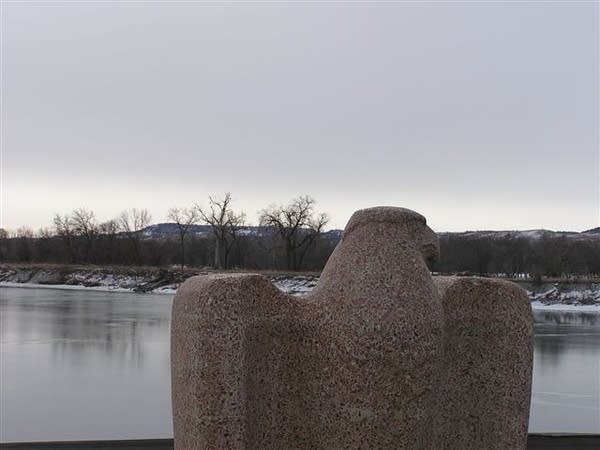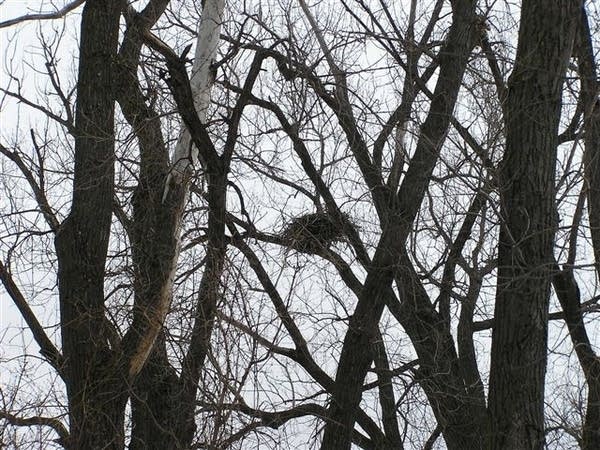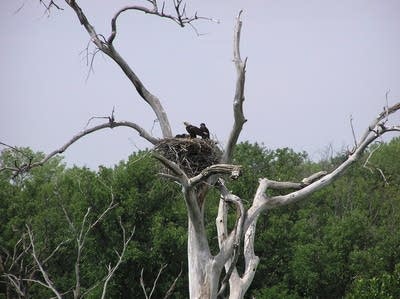South Dakota bald eagles make a comeback
Go Deeper.
Create an account or log in to save stories.
Like this?
Thanks for liking this story! We have added it to a list of your favorite stories.

It's Mike Bryant's job to create habitat to improve the eagle population. He's the manager of the Karl E. Mundt National Wildlife Refuge near the Fort Randall dam. As we drive across the Missouri River dam he points.

"There's some in the trees over there," says Bryant.
He points to a half-dozen eagles of different sizes and coloring sitting in a cottonwood tree. The tree hovers over open water below the dam. It's a perfect spot for eagles to wait and watch for fish or other prey. In some winters, as many as 200 eagles spend the cold months along the banks of the Missouri River.
Mike Bryant knows where to look for eagles and he explains the birds' behavior in a rather matter-of-fact way. Bryant credits two things for bringing back the bald eagle from near extinction; designating land as habitat and banning the pesticide DDT.
Turn Up Your Support
MPR News helps you turn down the noise and build shared understanding. Turn up your support for this public resource and keep trusted journalism accessible to all.
"Once that (DDT) was banned the effort focused on protecting habitat, protecting areas that eagles have built nests, keeping human disturbance to a minimum in those areas," Bryant says. "That mostly is all that it's taken. They've done really well and they've come back very strong since DDT was banned especially."

We're bumping along in Mike Bryant's truck, toward the nesting area. The last time I was here was in the spring of 1993. I was covering a story about South Dakota's first nesting pair of bald eagles in more than a century. I watched a pair of eaglets peek their prehistoric-looking heads above the nest through binoculars. We were several hundred feet from the nest. It was an unforgettable and moving experience.
In 1993, one nesting pair was successful. Now there are more than 15 pairs of eagles nesting in this refuge. Across South Dakota, about 50 pairs of eagles maintain active nests.
Because it's not yet mating season, we can walk to the base of a cottonwood tree and look up, to see just how big an eagle nest is. This is a rare treat. The Karl E. Mundt National Wildlife Refuge is closed to the public and hunting is not allowed.
As we approach the nest, three adult eagles circle overhead. The nest is about 60 feet above us. It's a massive weaving of thick sticks and other grasses that weighs about 1,000 pounds.

Refuge Manager Mike Bryant says this is what's called an active nest.
"Now, they won't use the nest per say in the winter time, just strictly when they are going to lay and incubate hatch eggs and raise their young to flight stage," says Bryant. The bald eagle was listed as an endangered species in 1978. It's estimated that in the lower 48 states the eagle has recovered from about 700 nests to more than 9,000 nesting pairs today.
Bryant says he is surprised by the comeback the eagles made. He feels people respect the bald eagle and will learn to adapt to its needs as the population continues to grow.






